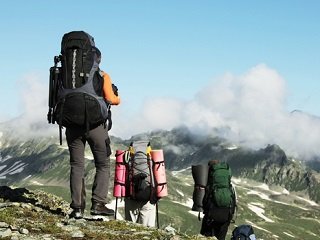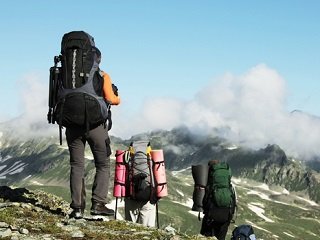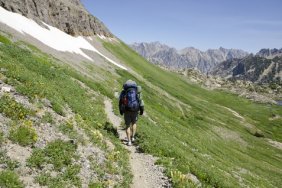 Recently, a friend of mine embarked on a backpacking trip through a mountainous region where the elevation brought him close to 9,000 feet. As he shared with me his experiences during the trip, he told me about his bout with altitude sickness after spending time at such high elevations. Now this is a guy who’s hiked for years, and who got me interested in it, as well, but even things like altitude sickness can befall each hiker, experienced and inexperienced alike. Today we’ll take a closer look at altitude sickness, as well as how to prevent it from happening to you, should you ever make a trek through the mountains.
Recently, a friend of mine embarked on a backpacking trip through a mountainous region where the elevation brought him close to 9,000 feet. As he shared with me his experiences during the trip, he told me about his bout with altitude sickness after spending time at such high elevations. Now this is a guy who’s hiked for years, and who got me interested in it, as well, but even things like altitude sickness can befall each hiker, experienced and inexperienced alike. Today we’ll take a closer look at altitude sickness, as well as how to prevent it from happening to you, should you ever make a trek through the mountains.
Altitude sickness occurs in high elevations when there’s a combination of reduced air pressure and low oxygen levels. The probability of it affecting you will vary depending on how fast you climb to a high altitude and how hard you push yourself while doing so. Symptoms include sluggishness, headache, dizziness, nausea, loss of appetite, elevated heart rate, and shortness of breath. Commonly, these symptoms tend to be mild, but if ignored, they can be fatal.
There are measures you can take to prevent altitude sickness from occurring. For example, you should avoid erratic changes in elevation throughout the day. It is better to gain elevation gradually, or camp at a high elevation for a day or more before undertaking the major ascent of your hike. As a general rule, it’s smart to stop for a day or two of rest for every 2,000 feet gained above the 8,000-foot mark.
If you start to experience symptoms of altitude sickness, the first thing you want to do is descend. If the symptoms become more severe, seek out lower elevation quickly before your condition worsens. Call for emergency help if the victim has severe breathing problems, an altered state of alertness, or is coughing up blood.
Not all of the dangers we encounter on the trail can be seen, and if you’re not careful and paying attention to your body when trekking through high elevations, altitude sickness can come out of nowhere. Be sure to pace yourself when traveling through mountainous trails, and move quickly to lower elevations if symptoms occur. Better to go slow or even cut the trip short than risk injury, or worse.








